

News
SpaceX’s first flight-proven Falcon Heavy Block 5 launch and landing in photos
Aside from center core B1057’s unfortunate demise, Falcon Heavy’s third launch was a huge success, placing two dozen satellites into three separate orbits over the course of nearly four hours.
Described as SpaceX’s most challenging launch ever, successfully completing the mission – known as Space Test Program-2 – has hopefully helped to guarantee that the US Department of Defense will fully certify Falcon Heavy for high-value military launches. SpaceX already has two such missions on its 2020/2021 launch manifest, although both are dependent upon the US Air Force deciding that the company’s newest rocket is ready. Teslarati photographers Pauline Acalin and Tom Cross were both on site to capture Falcon Heavy’s spectacular third launch, hopefully a sign of things to come as space agencies and commercial markets begin to warm to the new launch capabilities offered by the SpaceX rocket.
With the frenzied launch and landing now complete, we can look back through an array of photos produced over the course of Falcon Heavy’s STP-2 mission. Tom and Pauline (as well as dozens of other press photographers) endured hellish Florida humidity, heat, and mosquitos from start to finish, thankfully pushing through the environment to capture amazing photos of Falcon Heavy before and during launch.
STP-2 marked the first time two flight-proven Block 5 Falcon Heavy boosters were simultaneously re-launched on a later FH mission, as well as the first time the US military has flown a dedicated SpaceX mission with any kind of flight-proven Falcon – let alone two of them. Both side boosters performed flawlessly, while – for the third time in a row – the new center core was sadly unable to return to port aboard drone ship Of Course I Still Love You (OCISLY).




Incredibly, despite the fact that SpaceX had the USAF, NASA, and the future of Falcon Heavy’s US military launch career hanging on the line, the company’s engineers and technicians were able to pull off quite the feat, turning side boosters B1052 and B1053 around for a second launch just 74 days after their April 11th debut. In other words, despite the countless hurdles, the dual side booster reuse tied and nearly beat SpaceX’s current reusability records (71 days overall, 74 days for Block 5). This bodes extremely well for record-smashing rapid refuses of Falcon 9 boosters in the near future.
With their second launches now snuggly under their belts, B1052 and B1053 will very likely be converted into regular Falcon 9 boosters and enter into circulation as part of SpaceX’s flight-proven Falcon 9 fleet. With the ex-side boosters, that fleet could soon stand at an impressive eight flightworthy rockets, all nearing readiness or already ready for their next launches.


Falcon Heavy’s second successful launch in 11 weeks is nevertheless a touch bittersweet, as the rocket’s next (fourth) launch – barring mystery interim missions – is scheduled no earlier than fall 2020, 15-18 months from now. After that Q4 2020 launch, known as AFSPC-44, Falcon Heavy has another three firm contracts with launches in 2021, followed by a tentative fourth contract with Inmarsat that still needs to be finalized. For now, we’ll have to savor Falcon Heavy’s STP-2 launch – likely the last for quite some time.
Check out galleries of Pauline and Tom’s excellent photos of the massive SpaceX rocket below.

Falcon Heavy readies for its second launch in 11 weeks, June 24th. (Pauline Acalin) 
Falcon Heavy’s metal-capped payload fairing glints in the sun, loaded with 24 satellites as part of the USAF STP-2 rideshare mission. (Pauline Acalin) 
Falcon Heavy Flight 3 bares one of its two sooty, flight-proven side boosters. (Pauline Acalin) 
The weather in Florida was horrifically hot and humid, as usual. (Tom Cross) 
(NASA – Kim Shiflett) 
(Pauline Acalin)

A long-exposure captured this spectacular view of Falcon Heavy’s launch, side booster and core stage separation, upper stage ignition, side booster reentry burns, and side booster landing burns – all in one frame. (Tom Cross) 
Liftoff! (Tom Cross) 
Falcon Heavy lifts off from Pad 39A on its third launch ever. Sadly, center core B1057 was unable to stick its drone ship landing. (Tom Cross) 
Pad 39A’s Crew Access Arm (CAA) glows blue as Falcon Heavy takes flight. (Tom Cross) 
A remote camera set up by Teslarati photographer Pauline Acalin captured this incredible view of all 27 Merlin 1D engines powering Falcon Heavy’s first stage. (Pauline Acalin)
Want to remember the awesomeness of Falcon Heavy every single day? Consider a limited-edition set of high-quality prints, signed by both Teslarati photographers to commemorate the rocket’s inaugural Starman launch.
News
Elon Musk: Tesla autonomous driving might spread faster than any tech
The CEO noted that “hardware foundations have been laid for such a long time.”
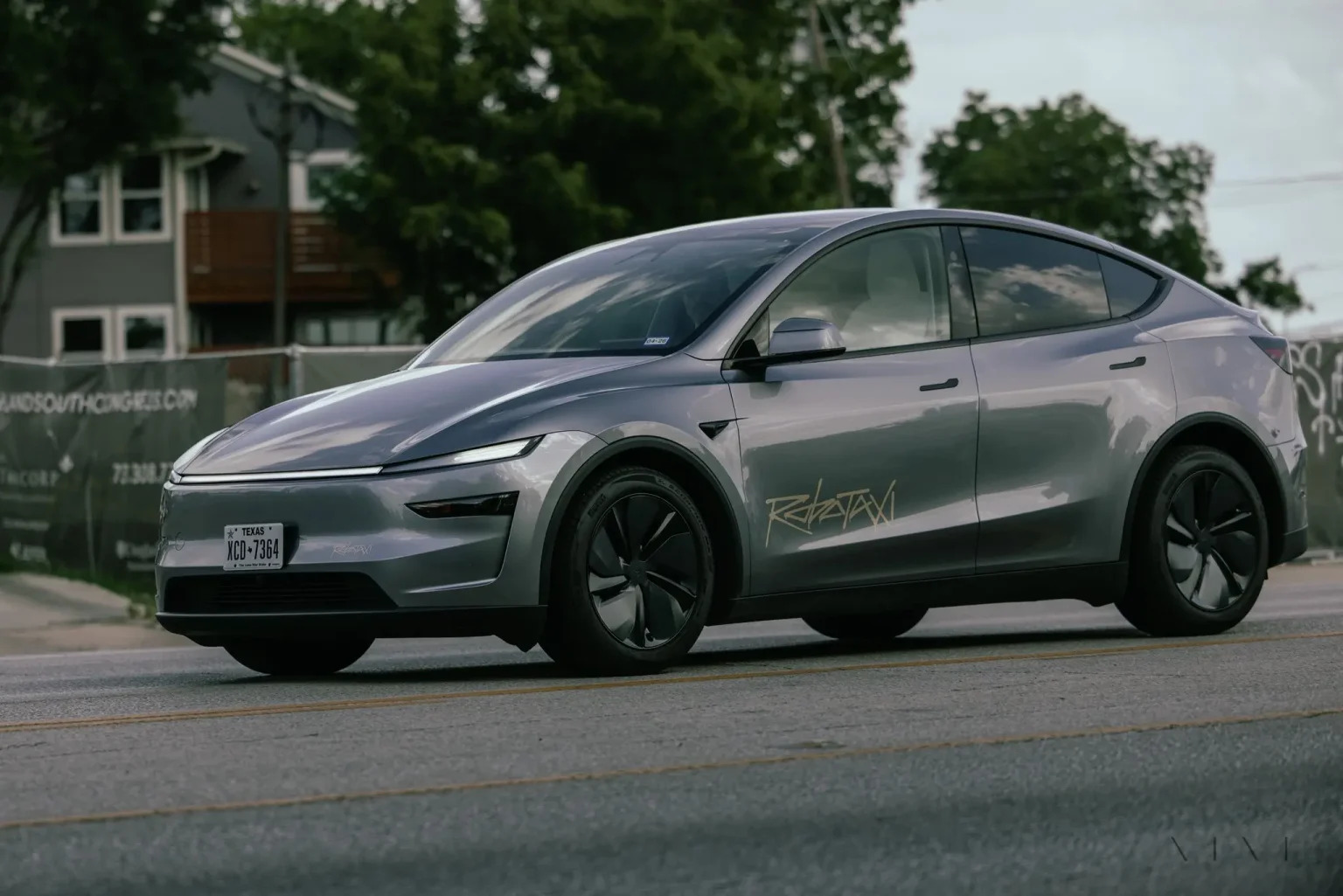
Elon Musk has shared one of his most optimistic forecasts for Tesla’s self-driving rollout yet. As per the CEO, Tesla’s self-driving system could see the fastest technological adoption in history, thanks to the fleet’s capability to gain autonomous capabilities through a software update.
The CEO shared his forecast in a post on social media platform X.
Tesla’s aims to scale autonomy
Musk’s comment came as a response to industry watcher Sawyer Merritt, who posted a comparison between the geofence of Tesla’s Robotaxi network and Waymo’s service area. As can be seen in the graphic, Tesla’s Austin geofence has gotten noticeably larger compared to Waymo’s service area.
In his response, Musk stated that “Tesla autonomous driving might spread faster than any technology ever.” He also stated that “hardware foundations have been laid for such a long time,” as a software update could unlock full autonomy “for millions of pre-existing cars in a short period of time.”
Musk’s comment bodes well for Tesla’s Robotaxi ambitions, which seem to be finally in reach with the deployment of Unsupervised FSD in vehicle factories, as well as Austin and the Bay Area. For now, however, Tesla’s Austin Robotaxis and Bay Area ride-hailing vehicles are still operated with a safety monitor in the driver’s seat.
Tesla’s latest Austin expansion
Tesla recently expanded its Austin Robotaxi service area this week to 243 square miles, its largest yet and nearly triple the coverage from two months ago. The move outpaces Waymo’s local service footprint, which remains at around 90 square miles.
The expansion marks Tesla’s second major Austin update since August and emphasizes its push to dominate the autonomous ride-hailing landscape. With both Tesla and Waymo racing to prove scale and reliability, Musk’s confidence suggests the real contest may be about who can move fastest once the tech flips on across Tesla’s fleet. Once that happens, Tesla would effectively be able to win the self-driving race.
News
Tesla sends clear message to Waymo with latest Austin Robotaxi move
It is the first expansion Tesla has made in Austin since the one on August 26. The company still operates in the Bay Area of California as well, referring to that program specifically as a “ride-hailing service.”

Tesla has sent a clear message to Waymo with its latest move to its Robotaxi program in Austin, Texas.
Tesla and Waymo are the two true leaders in autonomous ride-hailing to an extent. Tesla has what many believe is a lot of potential due to its prowess with the Supervised Full Self-Driving suite. It is also operating a driverless Robotaxi service in Austin with a “Safety Monitor” that sits in the passenger’s seat.
Tesla explains why Robotaxis now have safety monitors in the driver’s seat
The two companies have been competing heavily in the market since they both launched driverless ride-hailing services in Austin this year: Waymo’s in March and Tesla’s in June.
One of the main drivers in the competition between the two is service area size, or the geofence in which the cars will operate without a driver. In August, the two were tied with a service area of about 90 square miles (233.099 sq. km).
Tesla then expanded to about 170 square miles (440.298 sq. km) on August 26, dwarfing Waymo’s service area and expanding to freeways. Tesla’s freeway operation of the Robotaxi suite requires the Safety Monitor to be in the driver’s seat for safety reasons.
On Tuesday evening, Tesla made another move that sent a clear message to Waymo, as it expanded once again, this time to 243 square miles (629.367 sq. km).
This is according to Robotracker:
Here’s a comparison of Tesla’s geofence in Austin vs. Waymo’s
Tesla’s now spans 243 square miles, almost three times the size of Waymo’s at 89 square miles https://t.co/OCAHQDQhzb pic.twitter.com/wq5bHQXCp4
— TESLARATI (@Teslarati) October 29, 2025
It is the first expansion Tesla has made in Austin since the one on August 26. The company still operates in the Bay Area of California as well, referring to that program specifically as a “ride-hailing service.”
Yesterday, it expanded that service to the San Jose Mineta International Airport, something it has been working on for several months.
Waymo has its own set of distinct advantages over Tesla as well, as it operates in more cities and states than the EV maker. Waymo currently has its autonomous vehicle services in Phoenix, Arizona, San Francisco, Los Angeles, Austin, and Atlanta, Georgia.
Tesla plans to have half of the U.S. population with access to the Robotaxi platform by the end of the year.
News
Tesla exec reveals shock development with Cybercab
“If we have to have a steering wheel, it can have a steering wheel and pedals.”
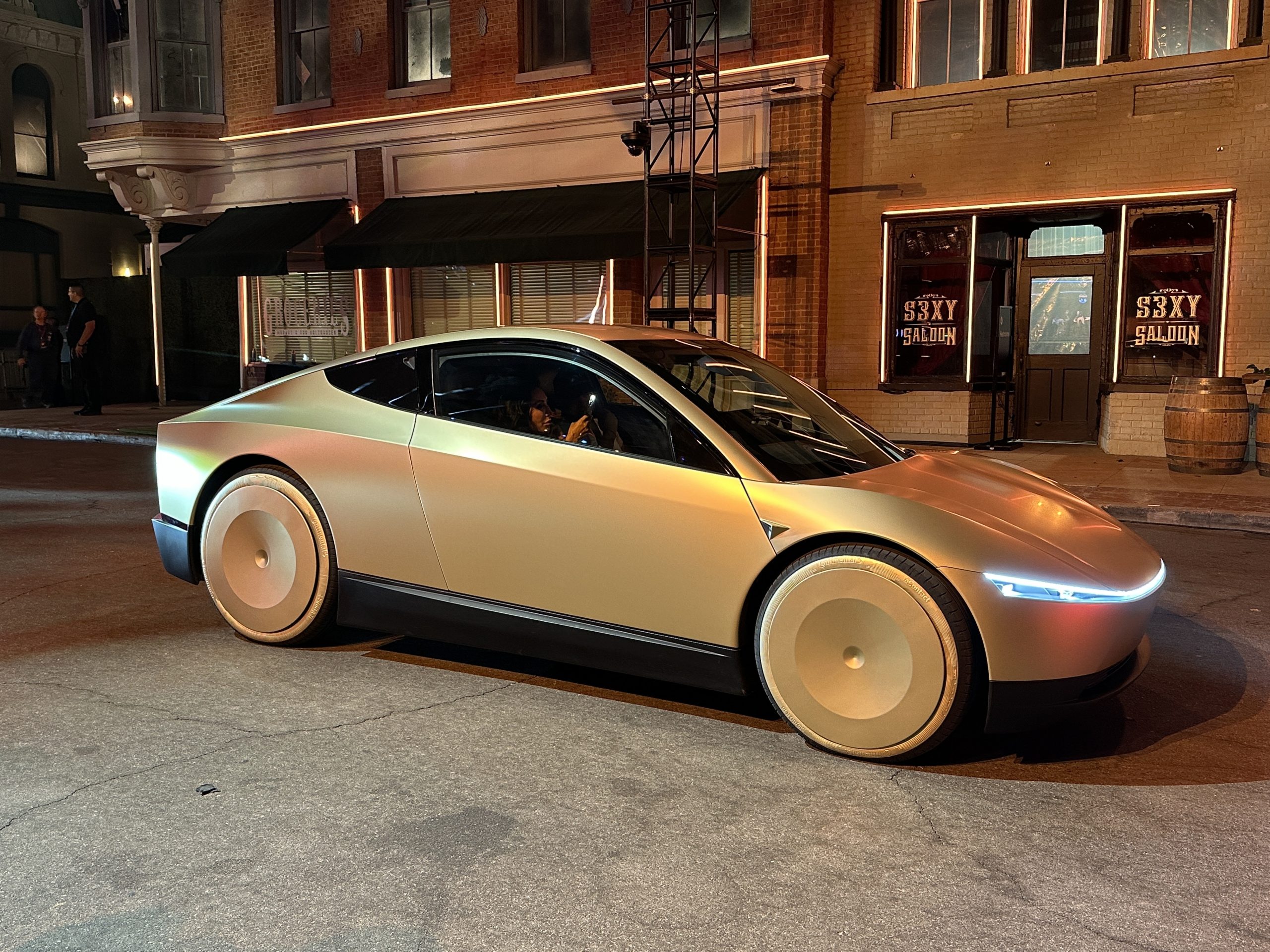
Tesla is planning to launch the Cybercab in the second quarter of next year, and it is designed to be fully autonomous, so much so that the company is planning to build it without a steering wheel or pedals.
However, a Tesla executive said today that the company could ditch that idea altogether in what would be a major shift from the plans the company, and especially its CEO Elon Musk, have announced for the Cybercab.
Earlier today, Robyn Denholm, the company’s Chair for the Board of Directors, revealed that Tesla would potentially switch up its plans for the Cybercab based on potential regulatory requirements.

Credit: Tesla Europe & Middle East | X
Currently, even autonomous vehicles that operate for companies like Tesla and Waymo are required to have steering wheels and pedals. From a regulatory perspective, this could halt the plans Tesla has for Cybercab.
Denholm said in an interview with Bloomberg:
“If we have to have a steering wheel, it can have a steering wheel and pedals.”
Interestingly, Musk and Tesla have not veered away from the idea that the vehicle will be without these operational must-haves.
Since the vehicle was revealed last October at the We, Robot event in Los Angeles, Tesla has maintained that the car would be built without a steering wheel or pedals, and would equip two seats, which is what is statistically most popular in ride-sharing, as the vast majority of rides have only one or two passengers.
Musk doubled down on the plans for Cybercab as recently as last week, when he said:
“That’s really a vehicle that’s optimized for full autonomy. It, in fact, does not have a steering wheel or pedals and is really an enduring optimization on minimizing cost per mile for fully considered cost per mile of operation. For our other vehicles, they still have a little bit of the horse carriage thing going on where, obviously, if you’ve got steering wheels and pedals and you’re designing a car that people might want to go very direct past acceleration and tight cornering, like high-performance cars, then you’re going to design a different car than one that is optimized for a comfortable ride and doesn’t expect to go past sort of 85 or 90 miles an hour.”
Cybercab is fully conceptualized as a vehicle that has zero need for pedals or a steering wheel because it is aimed toward being fully reliant on a Level 5 autonomous platform.
Tesla is ramping its hiring for Cybercab vehicle manufacturing roles
Regulators could get in the way of this, however, and although the car could drive itself and be a great solution for ride-hailing, it might need to have these controls to hit the road in the future.
-
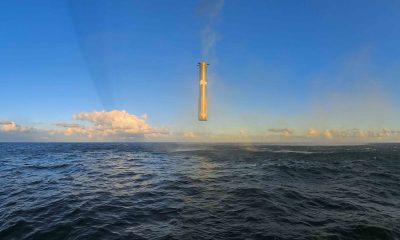
 Elon Musk2 weeks ago
Elon Musk2 weeks agoSpaceX posts Starship booster feat that’s so nutty, it doesn’t even look real
-

 Elon Musk2 weeks ago
Elon Musk2 weeks agoTesla Full Self-Driving gets an offer to be insured for ‘almost free’
-
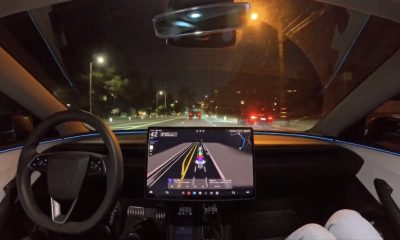
 News2 weeks ago
News2 weeks agoElon Musk confirms Tesla FSD V14.2 will see widespread rollout
-
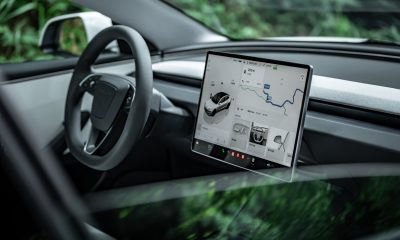
 News2 weeks ago
News2 weeks agoTesla is adding an interesting feature to its centerscreen in a coming update
-
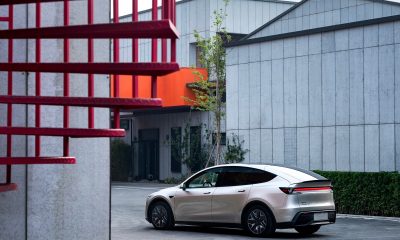
 News2 weeks ago
News2 weeks agoTesla launches new interior option for Model Y
-
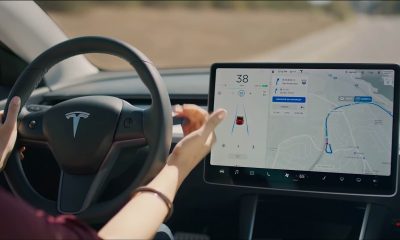
 News2 weeks ago
News2 weeks agoTesla widens rollout of new Full Self-Driving suite to more owners
-

 Elon Musk2 weeks ago
Elon Musk2 weeks agoTesla CEO Elon Musk’s $1 trillion pay package hits first adversity from proxy firm
-

 News1 week ago
News1 week agoTesla might be doing away with a long-included feature with its vehicles

















